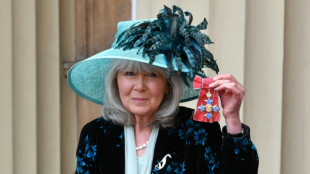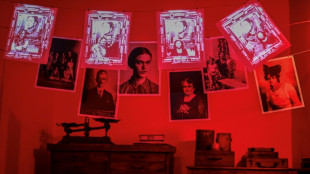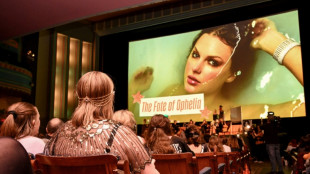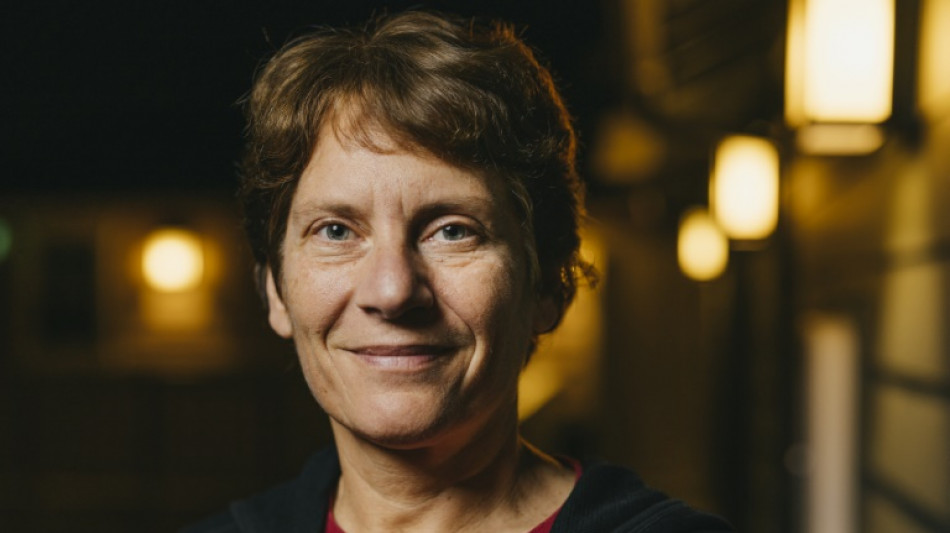
-
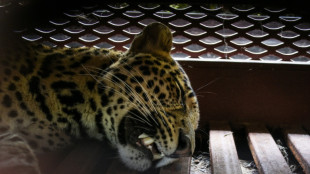 Leopard captured after wandering into Indonesian hotel
Leopard captured after wandering into Indonesian hotel
-
Israel, Hamas due in Egypt for ceasefire talks

-
 Rescuers scramble to deliver aid after deadly Nepal, India floods
Rescuers scramble to deliver aid after deadly Nepal, India floods
-
Tokyo stocks soar on Takaichi win, Paris sinks as French PM resigns
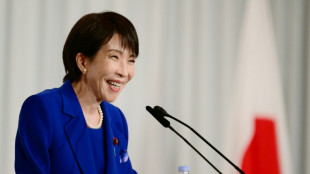
-
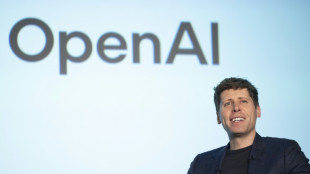 OpenAI offers more copyright control for Sora 2 videos
OpenAI offers more copyright control for Sora 2 videos
-
Australia prosecutors appeal 'inadequate' sentence for mushroom murderer: media
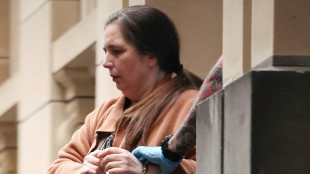
-
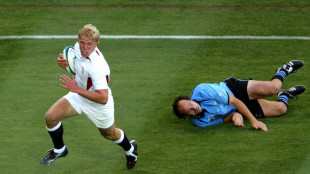 Rugby World Cup-winning England star Moody has motor neurone disease
Rugby World Cup-winning England star Moody has motor neurone disease
-
Trump says White House to host UFC fight on his 80th birthday
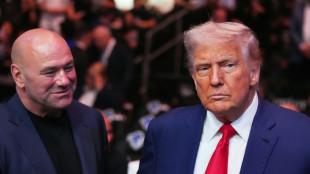
-
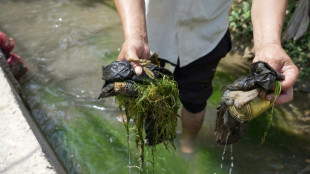 Vast reserves, but little to drink: Tajikistan's water struggles
Vast reserves, but little to drink: Tajikistan's water struggles
-
US government shutdown may last weeks, analysts warn

-
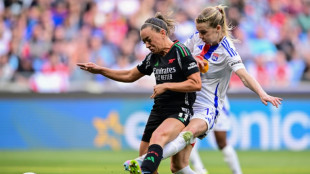 Arsenal host Lyon to start new Women's Champions League format
Arsenal host Lyon to start new Women's Champions League format
-
Gloves off, Red run, vested interests: Singapore GP talking points
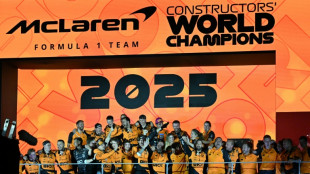
-
 Bills, Eagles lose unbeaten records in day of upsets
Bills, Eagles lose unbeaten records in day of upsets
-
Muller on target as Vancouver thrash San Jose to go joint top

-
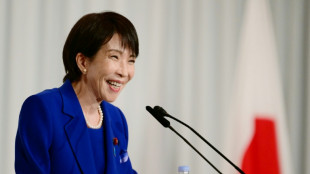 Tokyo soars, yen sinks after Takaichi win on mixed day for Asia
Tokyo soars, yen sinks after Takaichi win on mixed day for Asia
-
China's chip challenge: the race to match US tech
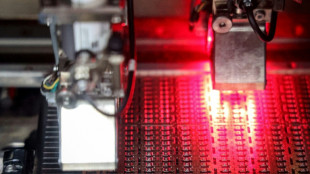
-
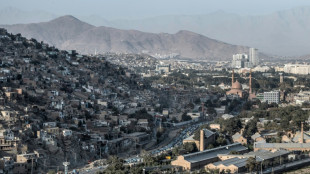 UN rights council to decide on creating Afghanistan probe
UN rights council to decide on creating Afghanistan probe
-
Indonesia sense World Cup chance as Asian qualifying reaches climax

-
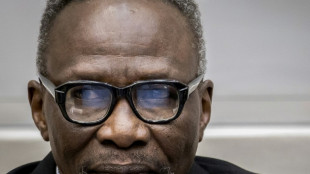 ICC to give war crimes verdict on Sudan militia chief
ICC to give war crimes verdict on Sudan militia chief
-
Matthieu Blazy to step out as Coco's heir in Chanel debut
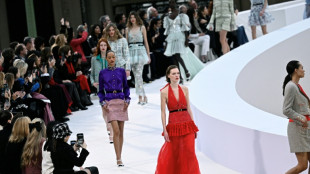
-
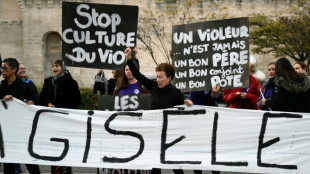 Only man to appeal in Gisele Pelicot case says not a 'rapist'
Only man to appeal in Gisele Pelicot case says not a 'rapist'
-
Appetite-regulating hormones in focus as first Nobel Prizes fall

-
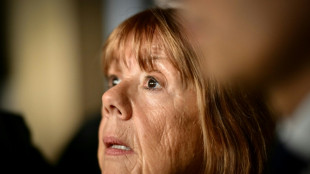 Gisele Pelicot: French rape survivor and global icon
Gisele Pelicot: French rape survivor and global icon
-
Negotiators due in Egypt for Gaza talks as Trump urges quick action
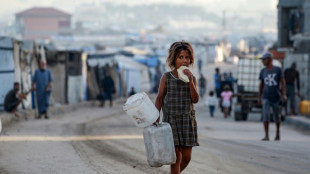
-
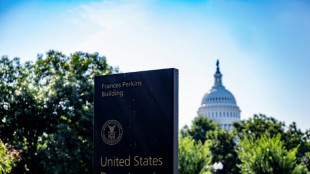 'My heart sank': Surging scams roil US job hunters
'My heart sank': Surging scams roil US job hunters
-
Competition heats up to challenge Nvidia's AI chip dominance

-
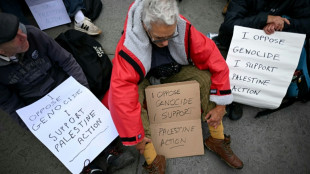 UK police to get greater powers to restrict demos
UK police to get greater powers to restrict demos
-
Guerrero grand slam fuels Blue Jays in 13-7 rout of Yankees

-
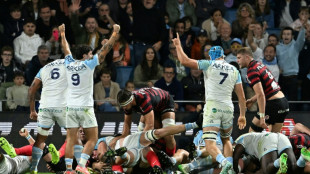 Five-try Bayonne stun champions Toulouse to go top in France
Five-try Bayonne stun champions Toulouse to go top in France
-
Fisk reels in Higgo to win maiden PGA Tour title in Mississippi
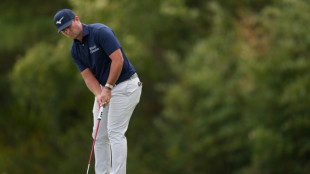
-
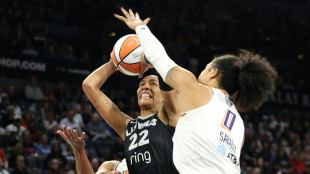 Aces overpower Mercury for 2-0 lead in WNBA Finals
Aces overpower Mercury for 2-0 lead in WNBA Finals
-
Bayonne stun champions Toulouse to go top in France
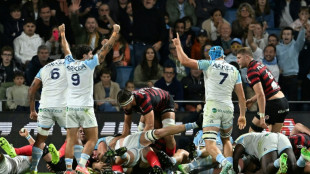
-
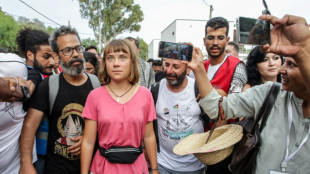 Greta Thunberg among Gaza flotilla detainees to leave Israel
Greta Thunberg among Gaza flotilla detainees to leave Israel
-
Atletico draw at Celta Vigo after Lenglet red card
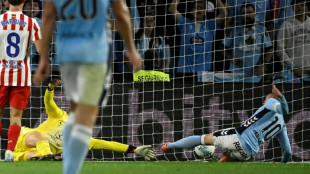
-
 Ethan Mbappe returns to haunt PSG as Lille force draw with Ligue 1 leaders
Ethan Mbappe returns to haunt PSG as Lille force draw with Ligue 1 leaders
-
Hojlund fires Napoli into Serie A lead as AC Milan held at Juve

-
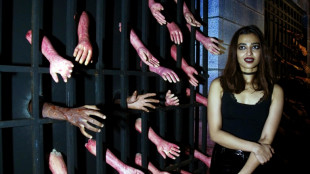 Vampires, blood and dance: Bollywood horror goes mainstream
Vampires, blood and dance: Bollywood horror goes mainstream
-
Broncos rally snaps Eagles unbeaten record, Ravens slump deepens

-
 Former NFL QB Sanchez charged after allegedly attacking truck driver
Former NFL QB Sanchez charged after allegedly attacking truck driver
-
France unveils new government amid political deadlock
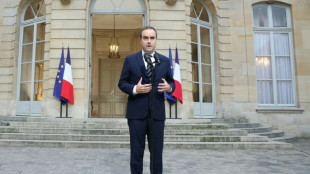
-
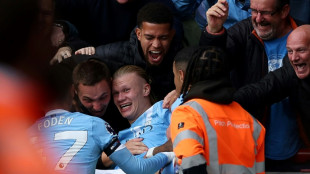 Child's play for Haaland as Man City star strikes again
Child's play for Haaland as Man City star strikes again
-
India crush Pakistan by 88 runs amid handshake snub, umpiring drama
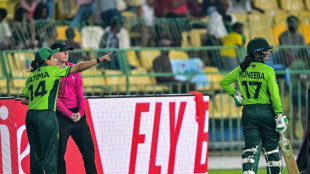
-
 Hojlund fires Napoli past Genoa and into Serie A lead
Hojlund fires Napoli past Genoa and into Serie A lead
-
Sevilla rout 'horrendous' Barca in Liga thrashing
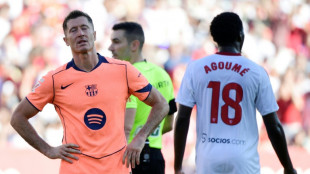
-
 Haaland fires Man City to win at Brentford, Everton end Palace's unbeaten run
Haaland fires Man City to win at Brentford, Everton end Palace's unbeaten run
-
Haaland extends hot streak as Man City sink Brentford
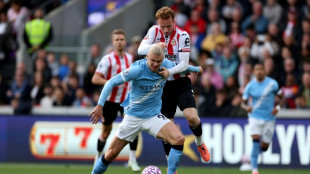
-
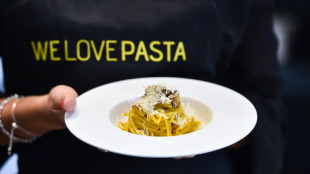 Italy working hard to prevent extra US tariffs on pasta
Italy working hard to prevent extra US tariffs on pasta
-
Sinner out of Shanghai Masters as Djokovic battles into last 16
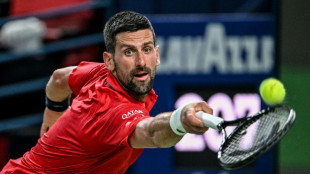
-
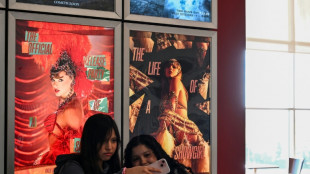 Swift rules N. America box office with 'Showgirl' event
Swift rules N. America box office with 'Showgirl' event
-
Ryder Cup hero MacIntyre wins Alfred Dunhill Links on home soil
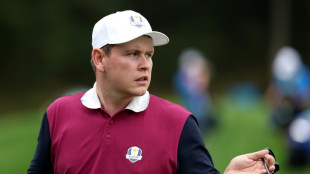

Nobel winner's ingenious chemistry could lead to cancer breakthroughs
"All kinds of crazy things" is how Carolyn Bertozzi, a 2022 Nobel laureate, describes her life's work. Actually performing "chemistry in cells and in people."
When she started her research in 1997, the Stanford professor was aiming only to observe the evolution of certain molecules on the surface of cancer cells.
Today, thanks to her discoveries, at least two companies -- including one she co-founded -- are developing innovative cancer treatments.
The multitude of applications made possible by her findings are impressive: delivering treatments with extreme precision, understanding better how drugs act inside the body, visualizing certain bacteria, to name a few.
"I can't even really enumerate them. The vast majority of those applications I would never have foreseen," she told AFP in an interview.
The Nobel Prize committee recognized Bertozzi's pioneering advances on Wednesday, making her only the eighth woman to win the chemistry prize, at just 55 years old.
- Lego pieces -
Her journey began when she found she had a passion for organic chemistry, while taking pre-medicine courses at Harvard.
The subject is notoriously -- many say fiendishly -- difficult, but she credits an "amazing professor," the late David Evans, for bringing it to life -- and changing the course of her life.
"I said, forget the med school thing. I'm going to be a chemist," said Bertozzi, whose sister is a professor of applied mathematics, and father a retired professor of physics.
After completing her post-doctorate and joining the faculty at UC Berkeley, she wanted to take a closer look at glycans: complex carbohydrates, or sugars, located on the surface of cells, which "go through structural changes" when they become cancerous.
At the time, "there was no tool to image sugars, like in a microscope, for example," she said.
She had an idea that would require two chemical substances that fit together perfectly, like pieces of lego.
The first lego is fed to cells via a sugar. The cell metabolizes it and places it on the tip of the glycan. The second piece of lego, a fluorescent molecule, is injected into the body.
The two lego pieces click together, and voila: hidden glycans reveal themselves under a microscope.
This technique is inspired by "click chemistry" developed independently by Denmark's Morten Meldal and American Barry Sharpless -- Bertozzi's co-winners. But their discoveries relied on using copper as a catalyst, which is toxic to the body.
One of Bertozzi's great leaps was achieving the same type of ultra-efficient reaction without copper.
The other tour de force: making it all happen without wreaking havoc with other processes in the body.
"The beauty of it is that you can take the two Legos and click them together, even if they're surrounded by millions of other very similar plastic toys," she explained.
She coined the term "bioorthogonal chemistry," meaning a reaction that doesn't interfere with other biochemical processes. Perfecting the technique took 10 years.
- 'Cycle of science' -
Researchers are now leveraging these breakthroughs to develop cancer treatments.
Glycans on cancer cells "are able to hide the cancer cell from the immune system -- and so your body can't fight it, it can't see it," she explains.
Using bioorthogonal chemistry, "we made a new type of medicine, which basically acts like a lawnmower," says Bertozzi.
The first lego attaches to the cancer cell's surface, and the second, which clips onto it, is equipped with an enzyme that "mows off the sugars as if they're just grass, it cuts the grass and the sugars fall off," she says with a smile.
The drug is currently being tested in the early stages of a clinical trial.
Another company is seeking to use bioorthogonal chemistry to better target cancer treatment. The first lego piece is injected into a tumor, then a second, which carries the drug, attaches itself and acts only on its target.
"So that allows the oncologist to treat the tumor and kill the tumor without exposing the person's entire body to a toxic chemical," she says.
"What the future holds is hopefully an impact in human health," says Bertozzi. "But the people who decide that more so than myself, are the students and postdocs that join my lab."
Hundreds of them, current and former, filled her email box with messages of congratulations this morning.
"That really is the cycle of science -- it's being mentored and then mentoring" she adds. And "mentoring students gives you an opportunity to amplify the impact of your science."
H.Seidel--BTB

